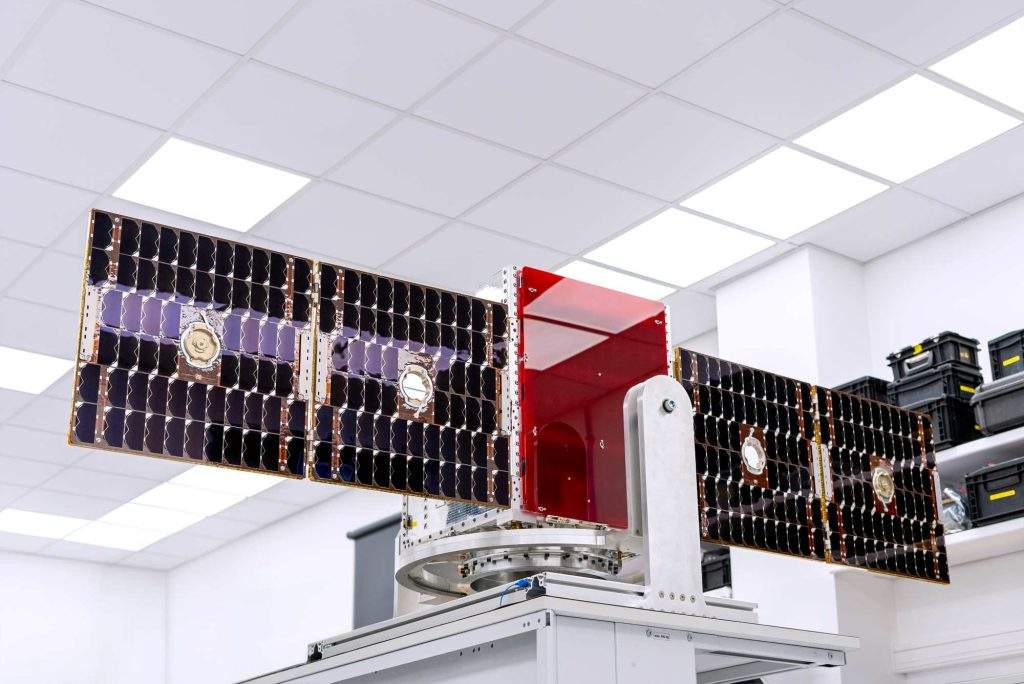Be part of the future with us!
Register now for our online product launch event on May 23rd.
A constellation is a network of satellites whose combined operation delivers a global service from space. For example, the GPS and Galileo positioning constellations each comprise two dozen large satellites in medium Earth orbits. Traditional satellite communications companies operate constellations of large satellites in geostationary orbit.
Small satellite or CubeSat constellations leverage new technologies to deliver unique services from low Earth orbits.

The advantages of small satellite and CubeSat constellations are manifold. By operating closer to Earth’s surface, these constellations avoid the communications limitations faced by larger satellites. Radio signals become weaker the further they travel, making high-orbit satellites dependent on large antennas and powerful transmitters. In contrast, low-orbiting satellites can deliver comparable results with more affordable technology.
While large satellites rely on their high vantage points to achieve broad coverage, constellations of small satellites achieve the same geographical coverage from low orbits through strength in numbers. Extensive networks of low-orbiting satellites create a constant presence in the sky.
Furthermore, small satellite costs also change the way constellations operate. Traditional satellites remain in orbit centuries after they stop working. Atmospheric drag will pull a small satellite or CubeSat from orbit within years rather than centuries. Constellation operators replace each deorbiting satellite with new designs based on the latest technology. As a result, these new constellations constantly improve their performance and introduce new capabilities.
Constellations may consist of dozens, hundreds, or thousands of satellites. Even though individual capabilities pale compared to traditional satellites, their combined performance creates new applications for users on Earth.
Low-orbiting small satellites and CubeSats can deliver fast broadband connectivity to any location on the planet. Moreover, each customer can use a portable device to stay connected. For example, Omnispace is building a network of satellites to provide global 5G communications.
Another type of constellation provides global Internet of Things (IoT) connectivity. Logistics companies use small, inexpensive transmitters to track their shipping containers, but only when within the range of wireless networks. Small satellite constellations such as those under development at OQ Technologies Lacuna Space will detect IoT devices’ weak, low-bandwidth signals to track shipments globally from orbit.
Small satellite Earth-observing (EO) constellations provide unique perspectives of our changing world. Although each satellite only sees a small portion of the planet below, an EO constellation can provide regular observations of Earth’s environment.
For example, on 2023 July 30 16U small satellite made by NanoAvionics for British company Sen has captured fires in Rhodes, Greece, see in the video below:
In conclusion, small satellite constellations are driving innovation in space services and revolutionizing our global economy. The combination of their unique advantages, such as enhanced communication, extensive coverage, and cost-effective operations, empowers small satellite constellations to fulfill crucial roles, from providing global broadband connectivity to facilitating IoT tracking and offering invaluable Earth observations. As technology continues to evolve, small satellite constellations will undoubtedly remain at the forefront of space-based solutions, shaping a connected and sustainable future for our world.